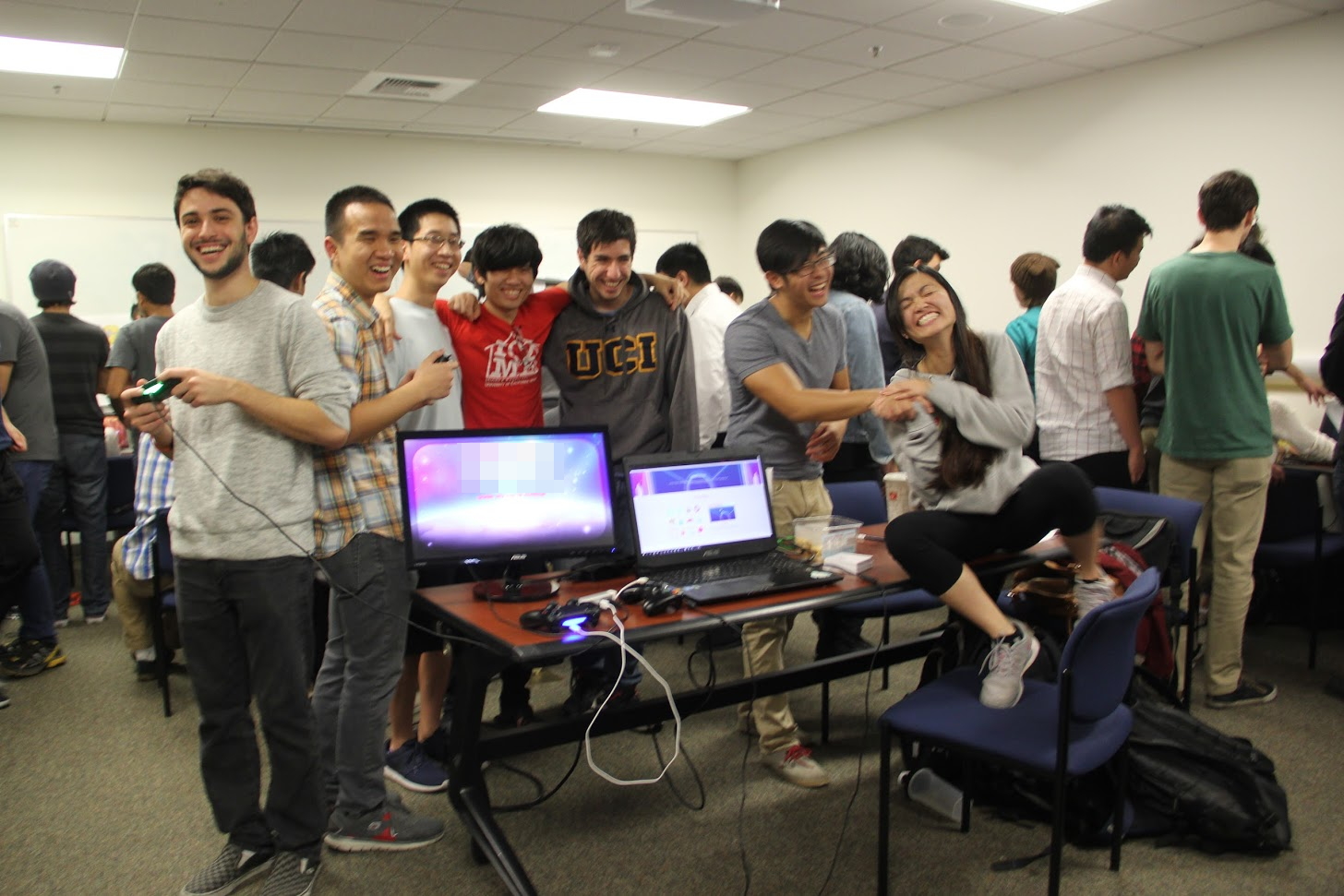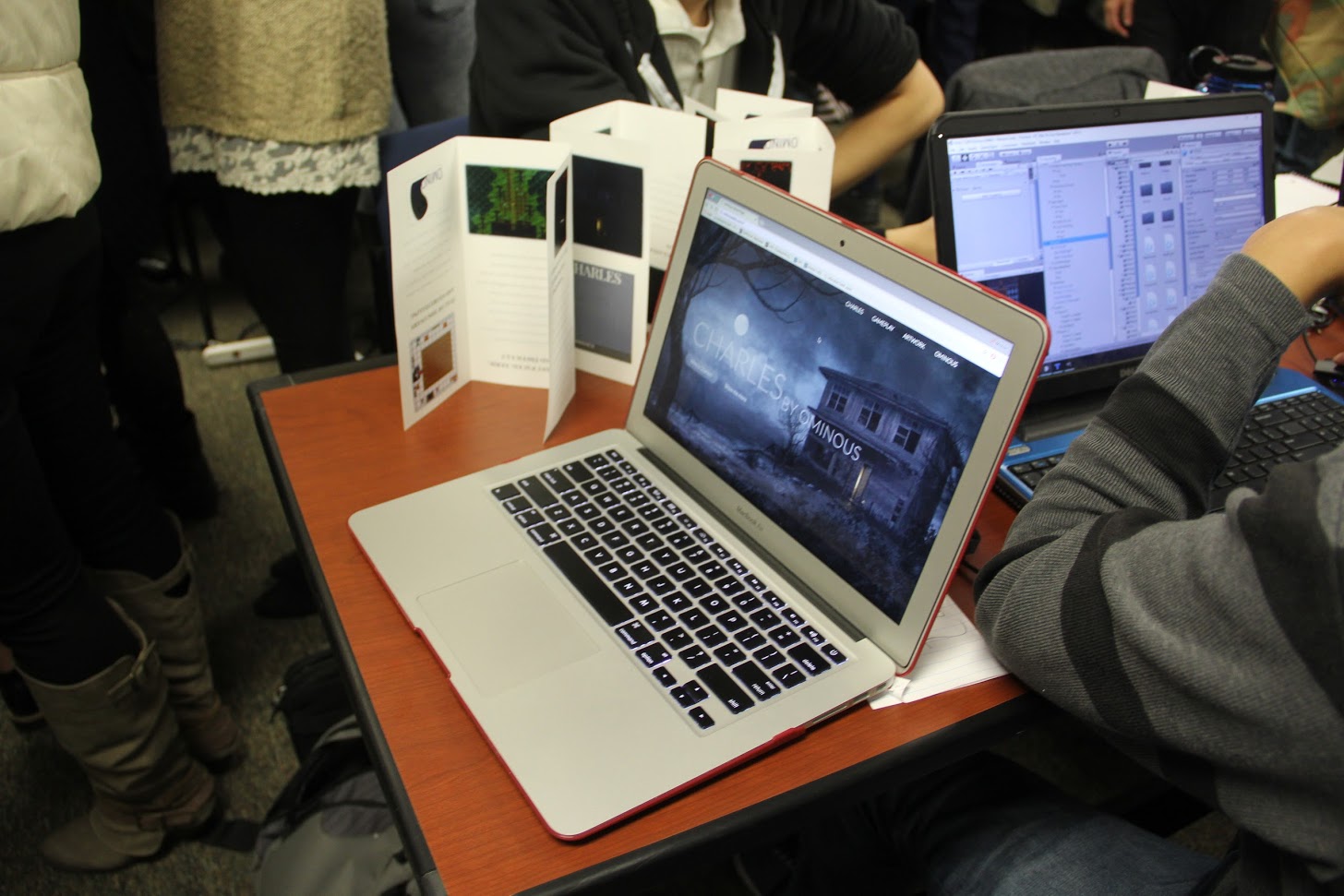A Successful Game Development Class

AUTHOR’S NOTE: Because many of the groups mentioned in this article may continue development of the games mentioned and with respect to their work and designs, I am limited in what I can show of many of them.
This quarter, I was asked to take over our department’s ‘Computer Game Development’ class from another faculty who was retiring. I guess it had something to do with that donation I made, but I was happy to do it, the retiring faculty recommended me personally, and offered all his materials for my use and adoption.
With absolutely no disrespect meant to him at all, I learned subsequently that he wasn’t actually a gamer, he was a programmer who developed this course as more of a technical overview of some coding techniques that could be applied to games, such as client-side prediction and some GPU tricks. Ultimately, much of the class was given over to project development time as opposed to formal instruction, as is common in a project class.
I decided to take the class in a different direction. We did talk about those things and other technical issues (and Thursdays were scheduled as project times as had been done before me), however as I always tell all my students, ‘you can’t develop technology in a vacuum.’ Or in this case, games. In other words, there is so much more to developing games than writing code and using unity. There are artists, musicians, writers (I made a HUGE deal about writing for games), level designers, and on top pf that, as my students also know, an understanding of how the industry and games themselves evolved is important; that context helps inform your decisions today.
So we talked about history, we talked about writing, we talked about level design, we talked about morals and ethics, we talked about the engines available today as opposed to the assembly languages available back when, we talked about character design and plot progression and player investment and balance and honing. All the while, students developed their own projects.
It is still a project-based course, as it was before I came along. Students are expected to develop a game using any platform and approach they wish, as long as it showed technical prowess and creativity in design. It is expected that students in this class have a background in Python and Java at least, although most have solid C# backgrounds as well.
My main directive to the groups was “Don’t build an ashtray.” I tell that to a lot of my project classes. You see, when I was in high school, I took a woodshop class, and the teacher – Mr. Cagle – went around the room asking each student what they would like to build that session. The responses were thoughtful; one kid wanted to build a full archery bow, another a roll top desk, and yet another a soap-box racer kind of thing. However one kid, when asked, said with his head down “I don’t know, I’ll build an ashtray.”
An ashtray? AN ASHTRAY? Everyone in the class had these great ideas, ones they had thought about and developed, but this guy who I guess didn’t care or wasn’t interested or wasn’t motivated or perhaps just lacked the fluid thought necessary could only come up with an ashtray, a single-component item that could be made out of clay in about two minutes. He had an opportunity to create something really interesting and unique and that’s all the better he could, or was willing, to do.
I always remembered that kid, and so even now I tell my project groups to not be that kid, don’t build an ashtray. In other words, be creative, be unique take this opportunity to explore your ideas and test your abilities.
They did not let me down.
One group developed a game about someone suffering from Irritable Bowel Syndrome, and the entire game had a timer that counted down continuously until a bathroom was found, which only served to reset the timer.
Another group developed a platform game in which the player had to switch back and forth between light and dark worlds in order to traverse levels. Another involved a pirate with a hook hand swinging through levels to gather gold and still another group created a game in which two brothers navigated through their own individual levels, with the effects of what one brother did (stopping time or causing rain) manifesting at the same time in the other brother’s level. And there was also one that was pseudo-text based and emulated a greenscreen of yore, with the player using actual Linux commands to solve some of the puzzles and minigames.
There was also a mobile game about a dog fending off a flea attack, Harambe escaping his captors, some flashlight-based games, a dungeon crawl, an RPG with unconventional characters, a ghost coming to terms with his infamous past, and a fantastic card game in which you navigated a 3D town and the group designed all the card graphics using a stained-glass aesthetic which was understated yet beautiful.
It was also required that teams develop websites and promotional materials for their games, and even many of those were outstanding. Some allowed for the downloading of demos and other materials, while others were more informational.
One group, pictured in the header and below, developed a party game so complete and well-polished that I felt, and from what I heard others did as well, that with just a little more work it could go up on Steam or the Xbox/PS stores. Because of that, the name of the game had to be blurred out.
At the end of the quarter we held a showcase that was open to the public, and in which every team was able to show off their creation. It was a great success, especially considering all 121 students, 21 teams, were crammed into the same moderately sized conference room. It was hot in there!
A couple of the games are playable online, so I’ll link to those here:
CoinUp, a game in which two players remove coins from either end of a row, with the goal being to have more money at the end of the session. It can be played as one game, best of three, or best of five, and the powerups add a tense twist to the action. It’s a simple game that can be frustrating in a just-one-more kind of way. EDIT: No longer online, I’ll see about the executable.
Another is Quadris, which is a Tetris clone in which gameplay takes place in each of the four compass points, and has you constantly switching perspective. It’s hard to explain but a blast to play. You can play it here.
I’m very proud of all of them; despite the nature of the course it’s very stressful as they only have 10 weeks to design and develop their game. Regardless, they all came though magnificently, and while I certainly learned that some structural changes will have to be made for next time, I’m already looking forward to what the next class is able to create.



